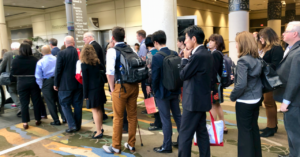Insights on an emerging competitor landscape

It’s Thanksgiving week in the US!
It’s a short week for us here on BSB because it’s Thanksgiving on Thursday followed by Black Friday the next day.
Now to be clear, we’re not having a sale on that day or even on Cyber Monday, but since it’s my birthday tomorrow, we do have a very rare offer (now live) for interested parties.
Check out our pricing page for more details!
Not all of the best drugs are born in the USA, however, as our latest landscape review and ASH23 Preview amply illustrates.
This emerging niche may have a few surprises hidden in it, and not necessarily from the expected quarters.
Here we highlight some abstracts to watch out for in San Diego in the context of recent developments in the space.
We also explain select ones we find intriguing, highlight emerging biotechs to watch out for (and why), plus identify those which could lead to some unexpected future dog drug heaven exits…
To continue reading our latest highlights on oncology new product development including commentary and analysis BSB subscribers can log-in or you can click to access the content.
This content is restricted to subscribers





 Earlier this month, Incyte announced the phase 3 trial miss for their JAK1 inhibitor in acute graft versus host disease (GVHD), perhaps coming as a surprise to a few observers familiar with the positive ruxolitinib result, but not so much to clinicians.
Earlier this month, Incyte announced the phase 3 trial miss for their JAK1 inhibitor in acute graft versus host disease (GVHD), perhaps coming as a surprise to a few observers familiar with the positive ruxolitinib result, but not so much to clinicians.

